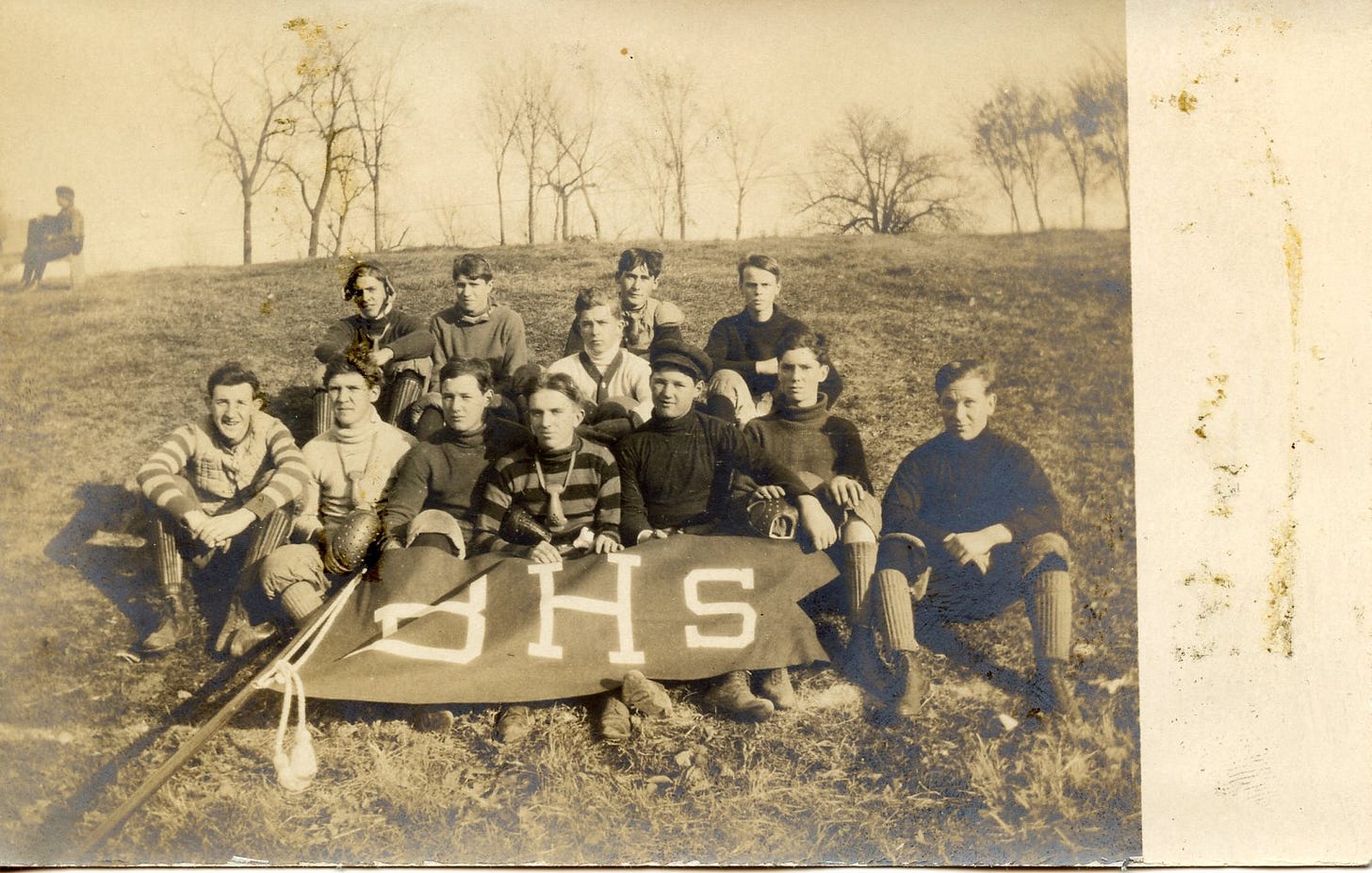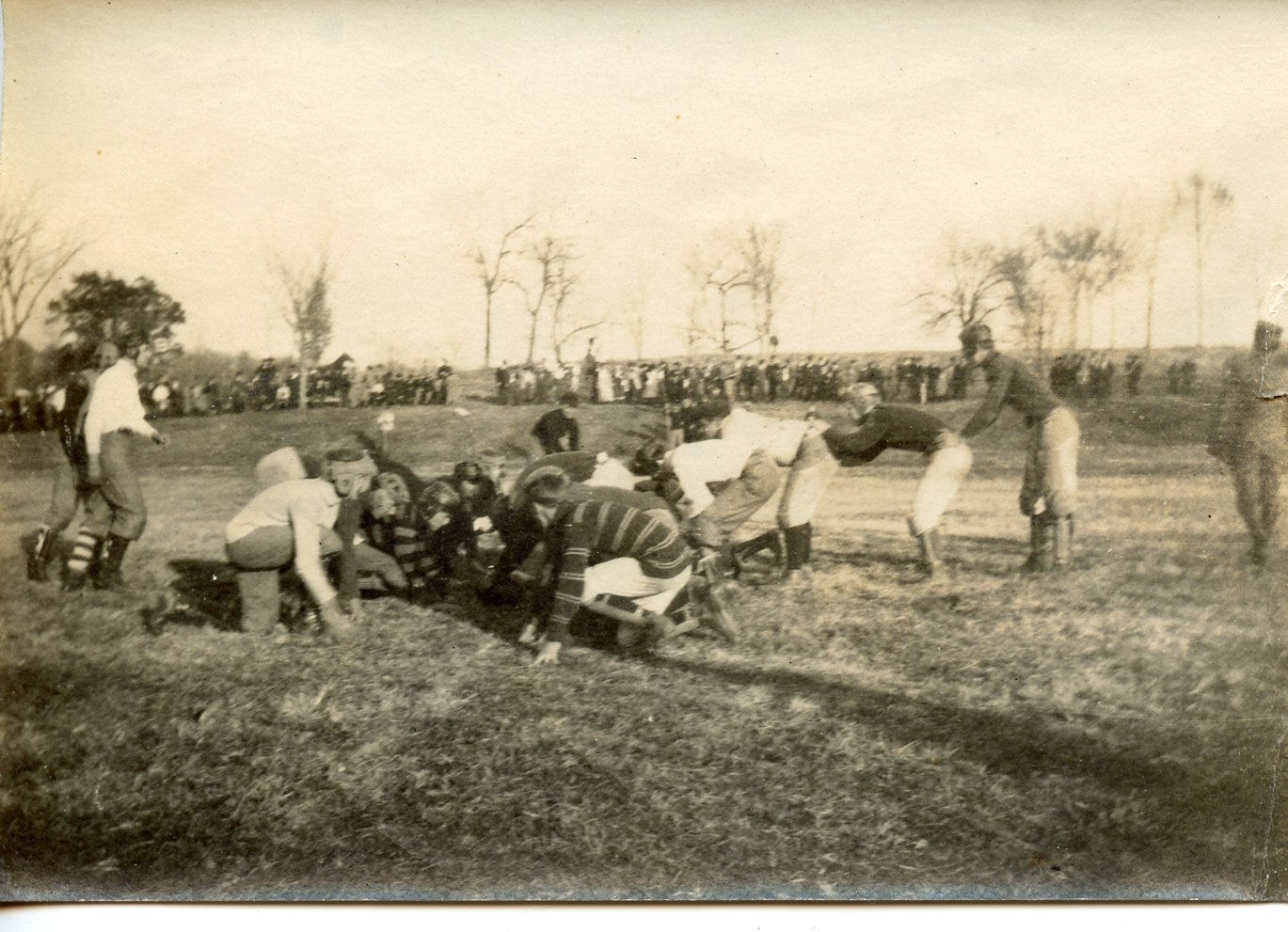Today's Tidbit... Triple Timing in Boonville, Missouri
Boonville, Missouri, sits on the Missouri River about 25 miles west of Columbia. Named after Daniel Boone's sons, it was a key launching point for those heading west on the Santa Fe Trail and was home to Kemper Military School, so it had a lot going on for a town unknown to most.
Boonville High School had a football team early in the 1900s. While information about the BHS team is limited, several images help us understand the football experience from their glory days.
Although they shared the same town, BHS does not appear to have played Kemper, which tended to play normal schools, college reserve squads, and prominent high schools. but images from the two teams’ games show they shared a playing field. The image from Kemper's yearbook below shows them playing on a field with a slight rise on the opposite side and a handful of barren trees.
The same background is seen in the postcard of the Boonville football posing with a BHS banner. Although the postcard is not dated, the players’ nose guards, shin guards, and headgear appear vintage 1906-1910.
Likewise, a game-action image shows Boonville on the same field after they or their opponent ran the ball up the middle. The umpire, seen walking toward the pile, is in a military-style uniform and may have been a faculty member at Kemper.
However, the most interesting image from this small collection shows Boonville and an opponent at the line of scrimmage. The quarterback stands a yard behind the center, ready to take the snap, while three backs stand in line, with the last two having placed their hands on the hips of the man in front of them. What in the world is going on here?
Though unusual to find in images of high school play, the formation was known as the triple tandem. As described by George Brooke, a Penn All-American who coached Stanford, Swarthmore, and Penn between 1897 and 1915, the triple tandem involved a quick handoff to the right halfback closest to the line who bucked or dove into the line, assisted by the fullback who pushed from behind and the left halfback who pushed the fullback from behind.

We cannot know how much yardage was gained via the triple tandem in Boonville, Missouri, back in the day. Still, it is fascinating that plays and techniques developed by Eastern football teams somehow found their way onto the playing fields in towns like Boonville. Perhaps the knowledge was spread by books, newspaper articles like the one above, or word of mouth. However it occurred, the knowledge transfer occurred quickly, and football trends spread to all parts of the country.
Football Archaeology is reader-supported. Click here to buy one of my books or otherwise support the site.





